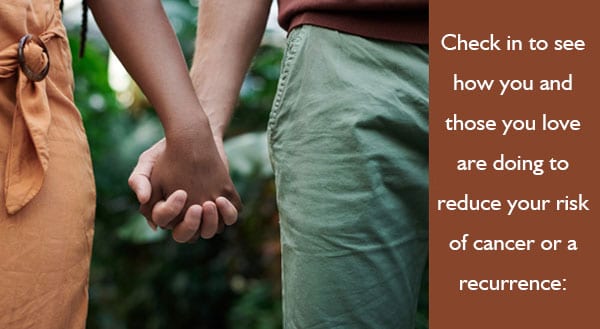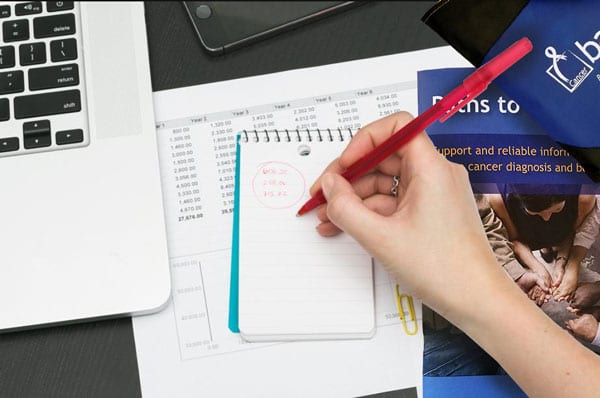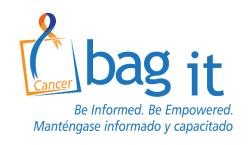
by Bag It Team | May 12, 2020 | Educational Articles
The doctor will “see you” now
 Telehealth (A.K.A. telemedicine) has been around for a long time although many of us are experiencing our first “virtual visit” with our healthcare provider this year. This “live,” 2-way visit usually includes video and audio communication via high speed internet access using a mobile device, tablet, or computer with a web camera. Alternatively, a phone call using a landline telephone can also be considered a televisit.
Telehealth (A.K.A. telemedicine) has been around for a long time although many of us are experiencing our first “virtual visit” with our healthcare provider this year. This “live,” 2-way visit usually includes video and audio communication via high speed internet access using a mobile device, tablet, or computer with a web camera. Alternatively, a phone call using a landline telephone can also be considered a televisit.
While not a perfect substitute for in-person healthcare, most people find it to be less stressful, more efficient and less time-consuming, with no need to travel to an office or wait for their provider.
Certain types of appointments are better suited for telehealth such as primary care and follow-up visits, health screenings and wellness visits, medication management check-ins, and behavioral healthcare.
Most insurers have expanded coverage (including Medicare and Medicaid) for telehealth visits. Contact your provider to find out what telehealth options are available for your next appointment.
Making a Telehealth appointment:
- Contact your provider’s office to determine if a telehealth appointment is an option. In some cases you may be able to make the appointment online on their website.
- If you are not sure if televisits are covered by your insurer and your provider cannot confirm, call your insurance company or visit the website.
- If you are scheduled for a telehealth visit, the office provides an app they want you to download. It could be Zoom, Skype or another telehealth app used by their office. They usually send you the link and instructions by text or email in advance so you can download it beforehand.
- Ask if there are any medical records that your provider needs in advance of the appointment for the doctor’s review and determine how they will be sent.
Prepare for your appointment:
- Find a quiet (and ideally) private place indoors. Have light in front of you, not in back of you. Avoid sitting in front of a window as it could make it difficult for the doctor to see your face.
- Consider having someone join you as a scribe, another set of ears and to handle the camera if the provider wants to see you move or view a particular part of your body.
- Have a pen and paper handy to write down notes, instructions you are given, and answers to your
 questions.
questions.
- Write down your questions in advance and be clear on what your goal is for this appointment.
- Fill out any paperwork and gather any reports, health history, logs and other requested information. Forward to the provider if needed for review in advance, any symptoms or readings you’ve collected.
- Ensure your medication list is up to date and any allergies are noted. You can also place the medication bottles within reach to reference during the call. Have your pharmacy details handy.
Tech Tips:
- Don’t sit in front of a bright window as it can obscure your face on the provider’s camera. Avoid light behind you from windows or lamps.
- Download and test the app to be used during your appointment. Check the audio. Make sure your device is charged.
- If you are using Facetime, Zoom, Skype, Google Meet or another accessible platform, you may want to practice before your appointment with your provider by using it during a social visit with a family member or friend.
- Keep the camera steady. If you are using a phone you may need to prop it up or use a stand.
- Turn off other streaming applications, music, notifications, etc. during the visit.
During the appointment:
- Seat yourself facing the screen so your face is in the center and fully visible with the camera at eye level.
- Open the app or platform a few minutes before the appointment time or at the time requested by the provider. You may be placed in a virtual ‘waiting room” until the provider is ready to see you.
- Before starting the visit your provider may ask for your consent to receive services through telehealth.
- Make sure you can hear the provider well and see their face if using video.
- Eliminate distractions such as other people, pets, devices. Do not eat or drink during the session.
- Your provider may ask you to move a certain part of your body, walk on camera, or move so the camera to examine a particular part of your body, depending on the nature of the visit.
- Be sure to ask your questions and write down the answers. If you don’t understand what is being said to you, ask for clarification before the call ends.
- Before the call ends, be sure you are clear on any recommendations given, prescriptions ordered and any additional or follow-up appointments or testing to be scheduled.
- Know how to reach your provider by phone or email between appointments.

by Lisa Terrazas | Apr 15, 2020 | Educational Articles
Volunteering is a wonderful gift, however look what it can GIVE you
 1. Volunteering will give you a sense of self-accomplishment.
1. Volunteering will give you a sense of self-accomplishment.
Of course, volunteer work is doing good for the community around you. But, it can also make you feel good about yourself at the same time. When you help someone in need, it gives you a sense of accomplishment that can increase your self-confidence tremendously.
2. Volunteering improves your mental health.
Volunteering and helping others will make you a happier person in general and can have a profound effect on your overall psychological well being. Giving of your time and talents and doing something you love is great for your mental health. Volunteering for an organization you have an interest in and getting involved in your community will help you avoid depression and isolation – you will feel great about helping others. Nothing relieves stress better than a meaningful connection with others.
3. Volunteering brings fulfillment to your life.
It is important to balance life with the activities you love. Volunteering for an organization you have a genuine interest in is a relaxing escape from your busy schedule. Doing volunteer work you find meaningful and interesting can be relaxing and can give you an energizing escape from your day-to-day routine of work, school, or other commitments. Changing up your schedule will leave you with renewed creativity, motivation, and vision.
4. Volunteering helps develop new skills and improve current ones.
While motivating and inspiring you to work hard, volunteering can also help you develop your professional skills. Communication, project planning, and teamwork are all great skills to have – and all three are used in volunteering!
5. Volunteering connects you to others.
One of the best ways to make new friends and strengthen existing relationships is to participate in a shared activity together. Volunteering is a great way to meet new people who share common interests with you. Dedicating your time as a volunteer also helps you expand your network and practice social skills with others.
Do you want to add more meaning to your life?
Join a group of wonderful volunteers?
How about making a difference in the life of those impacted by cancer?
Then take the next step and become a Bag It volunteer!
For further information click here or contact Lisa Terrazas

by Annettra Farrington | Mar 17, 2020 | Educational Articles

Here are the details to collect, how to start the conversation and free online tools to help you build a solid family health history.
Information to collect:
- Write down the names of relatives on both sides of the family (ideally three generations): parents, children, grandchildren, siblings, grandparents, aunts/uncles, nieces/nephews, cousins. (Accessing a family tree may be helpful)
- Add for each person any information you have about their:
- sex at birth
- date of birth
- ethnicity
- known medical and mental health conditions and age of diagnosis
- any other details about lifestyle, habits, environmental factors, results of any genetic testing.
(If a family member is deceased, note age at time of death, any known medical/mental health conditions, and cause of death)
Start the conversation!
- Identify the family members on each side (mother’s and father’s side) who might be most knowledgeable about your family members.
- Let them know the reason you would like to ask them some questions and the kinds of information you are seeking. Give them some time to think about it or to collect info if needed.
- Share any information you have gathered so far and then ask them to add more details where possible.
- Some family members may be uncomfortable discussing these matters. Respect the privacy of your relatives as confidential information is shared. Let them know that having this information gathered will benefit ALL family members.
- The information can be gathered in person, by phone, or in writing – whatever is most comfortable and most convenient. In cases where information is incomplete, just include what is accurately known. Do not guess.
- Sometimes medical records and family documents like scrapbooks can fill in some blanks, as can public records.
What to do with the information you’ve collected:
- Create a written document (or see below for online options) with the collected family history information gathered.
- Share copies with other family members for them to share with their own doctors to inform them of their family health history.
- Give a copy of the Family Health History to your doctor for their records and review it with them. The document can help your doctor look for early warning signs of disease and recommend steps for reducing your personal risk of disease.
- Questions to ask your doctor about review of your Family Health History:
- Does my family history put me at risk for certain conditions or diseases? Other members of my family?
- Are there any screening tests I should have now or in the future?
- Should I have genetic counseling or genetic testing?
- What lifestyle recommendations do you have to reduce my risk?
- What information should I share with other family members?
- Be sure to update the records over time and provided updated copies to family members. This can be a valuable document for future generations as well.
Free online tools to help collect your family health history and share it with relatives and doctors.

by Annettra Farrington | Feb 13, 2020 | Educational Articles

Check in to see how you and those you love are doing to reduce the risk of cancer or a recurrence. Here are some tips and resources to get you started.
Healthy Lifestyle
- Maintain your ideal weight
- Physical activity
- Walk, jog, dance, bike, swim – or whatever you like to do
- Get up and move every hour
- Diet
- Eat lots of fresh vegetable and fruits of every color, whole grains, beans
- Avoid sugar, processed meats, junk foods
- Limit/eliminate alcohol intake
- Do not smoke or use tobacco products
- Avoid risky behaviors
Healthcare
- Have regular check-ups with your primary care physician
- Maintain good overall health to avoid viruses and chronic infections that increase your cancer risk
- Get cancer screenings and cancer vaccines recommended by your doctor
Harmful Exposures
- Protect your skin from the UV rays from the sun. Use sunscreen and don’t use tanning booths
- Steer clear of secondhand smoke and other environmental carcinogens
Want to know more? Check out these sites:
National Cancer Institute Prevent Cancer American Institute Cancer Research

by Annettra Farrington | Jan 14, 2020 | Educational Articles
- Have a conversation with your health care team about your treatment plan and the expected cost. Talk to your doctor about how cancer treatment could affect your ability to work.
- Understand your health insurance coverage. It is vital that you pay your health insurance premiums on time and in full. If you don’t have health insurance, immediately find out if you can obtain a policy or if you qualify for Medicaid.
- Meet early with your oncology social worker, navigator or advocate, and be candid about any financial difficulties and other needs you have. They are there to help you manage your cancer care costs.
- Be informed about your legal rights and all benefits available to you through your employer: disability insurance, accommodations in your job duties, hours/leave time. Your spouse should do the same with their employer.
- Prepare a budget. Organize and keep track of your bills. Verify insurance benefits are correctly applied. (Ask a trusted family member or friend to help you with this.) Appeal insurance claim denials. (Ask a member of your health care team to help with this.)
- If you are experiencing financial hardship, explain your situation to creditors and medical providers and ask for their help. You may be able to negotiate a discount or more time to pay your bills.
- Tap into the expertise of nonprofits in the cancer community. They can help you navigate resources and find assistance with costs related to treatment, co-payments, prescription drugs, basic needs, transportation, childcare as well as insurance matters and other support services. They can often help you apply. Several organization offer free services from their navigators and social workers: CancerCare, Livestrong, PAN, CSC, CancerCare pub
- Look into federal and other programs in your state that can help cover expenses and replace income if you can’t work during and after treatment. Apply quickly if you are eligible for benefits.
- Consider other of income: retirement accounts, available credit, personal loan, cashing in life insurance policy, sale of real estate or personal property.
- The financial burden of cancer can impact your physical and mental well-being. Asking for help can be hard but allowing others to lend a hand alleviates stress for you and your loved ones and lets your focus on your recovery.

by Annettra Farrington | Nov 19, 2019 | Educational Articles
 What are you grateful for today? November is a time to reflect more closely on the year (as December just gets crazy) and be thankful for what we have. Yes, these are things we should be doing every day but November is a great time to get started if you haven’t been practicing gratitude regularly.
What are you grateful for today? November is a time to reflect more closely on the year (as December just gets crazy) and be thankful for what we have. Yes, these are things we should be doing every day but November is a great time to get started if you haven’t been practicing gratitude regularly.
 Gratitude is appreciating what you have and noticing the good (even small things!) in your life – with or without a cancer diagnosis. Gratitude can help ground you and get in touch with what you are feeling at that moment. That old cliché “stop and smell the roses or the fall leaves or the snow” can have some real physical and mental benefits for your well-being.
Gratitude is appreciating what you have and noticing the good (even small things!) in your life – with or without a cancer diagnosis. Gratitude can help ground you and get in touch with what you are feeling at that moment. That old cliché “stop and smell the roses or the fall leaves or the snow” can have some real physical and mental benefits for your well-being.
People tend to be happier, have more positive emotions and greater self-esteem when practicing gratitude. Physically, it can reduce depression symptoms, enhance your sleep, and increase your exercise which leads to other health benefits.
While it can be difficult to be thankful for anything when you or someone you care about is dealing with cancer, receiving care from a compassion and dedicated healthcare team is definitely something to be grateful for. Gratitude can actually increase your resilience, help you find the joy along the way, and even ease the fear of recurrence.
There are many ways to practice gratitude so don’t think about it being another daunting task on your to do list, it can be as simple or complex as you like – make it work for you! As you start to think about what you are grateful for you can instantly feel a change in your attitude and the more you do it the more you will experience the benefits. It’s not difficult and below are some simple ways to get you started today.
- Think: At some point in the day take a moment and identify 1-3 things you are grateful for, or try a guided meditation to help focus on the present. (I love my job, but I also love my family and need to put them first.)
- Write: Start a journal and be specific (I’m thankful my loved one could take time from work to go with me to my appointment) or put slips of paper in a jar throughout the day, download a calendar and jot them down. Send a note to someone telling them why you are grateful for them.
- Visual: Take photos of things you are grateful for or cut pictures out of a magazine. (The flowers/balloons in the infusion room brought a smile to everyone’s face.)
However you decide to practice gratitude, make it yours and practice it regularly so it becomes second nature to you and then reap the emotional, social, health, and personal benefits. As you begin treatment, finish treatment, head to an appointment, support a friend or loved one remember to find something to be grateful for despite the challenging feelings you may have at that moment and hopefully that will brighten your day (or at least that moment) a little.We are grateful for all those who believe in the Bag It bag and provide it to patients, friends, loved ones, or themselves and hope that you feel supported and empowered.
Here are some additional resources to help you get started today!
Ted Talks
Practice Gratitude
Gratefulness

 Telehealth (A.K.A. telemedicine) has been around for a long time although many of us are experiencing our first “virtual visit” with our healthcare provider this year. This “live,” 2-way visit usually includes video and audio communication via high speed internet access using a mobile device, tablet, or computer with a web camera. Alternatively, a phone call using a landline telephone can also be considered a televisit.
Telehealth (A.K.A. telemedicine) has been around for a long time although many of us are experiencing our first “virtual visit” with our healthcare provider this year. This “live,” 2-way visit usually includes video and audio communication via high speed internet access using a mobile device, tablet, or computer with a web camera. Alternatively, a phone call using a landline telephone can also be considered a televisit. questions.
questions.

 1. Volunteering will give you a sense of self-accomplishment.
1. Volunteering will give you a sense of self-accomplishment.





 What are you grateful for today? November is a time to reflect more closely on the year (as December just gets crazy) and be thankful for what we have. Yes, these are things we should be doing every day but November is a great time to get started if you haven’t been practicing gratitude regularly.
What are you grateful for today? November is a time to reflect more closely on the year (as December just gets crazy) and be thankful for what we have. Yes, these are things we should be doing every day but November is a great time to get started if you haven’t been practicing gratitude regularly. Gratitude is appreciating what you have and noticing the good (even small things!) in your life – with or without a cancer diagnosis. Gratitude can help ground you and get in touch with what you are feeling at that moment. That old cliché “stop and smell the roses or the fall leaves or the snow” can have some real physical and mental benefits for your well-being.
Gratitude is appreciating what you have and noticing the good (even small things!) in your life – with or without a cancer diagnosis. Gratitude can help ground you and get in touch with what you are feeling at that moment. That old cliché “stop and smell the roses or the fall leaves or the snow” can have some real physical and mental benefits for your well-being.
Recent Comments